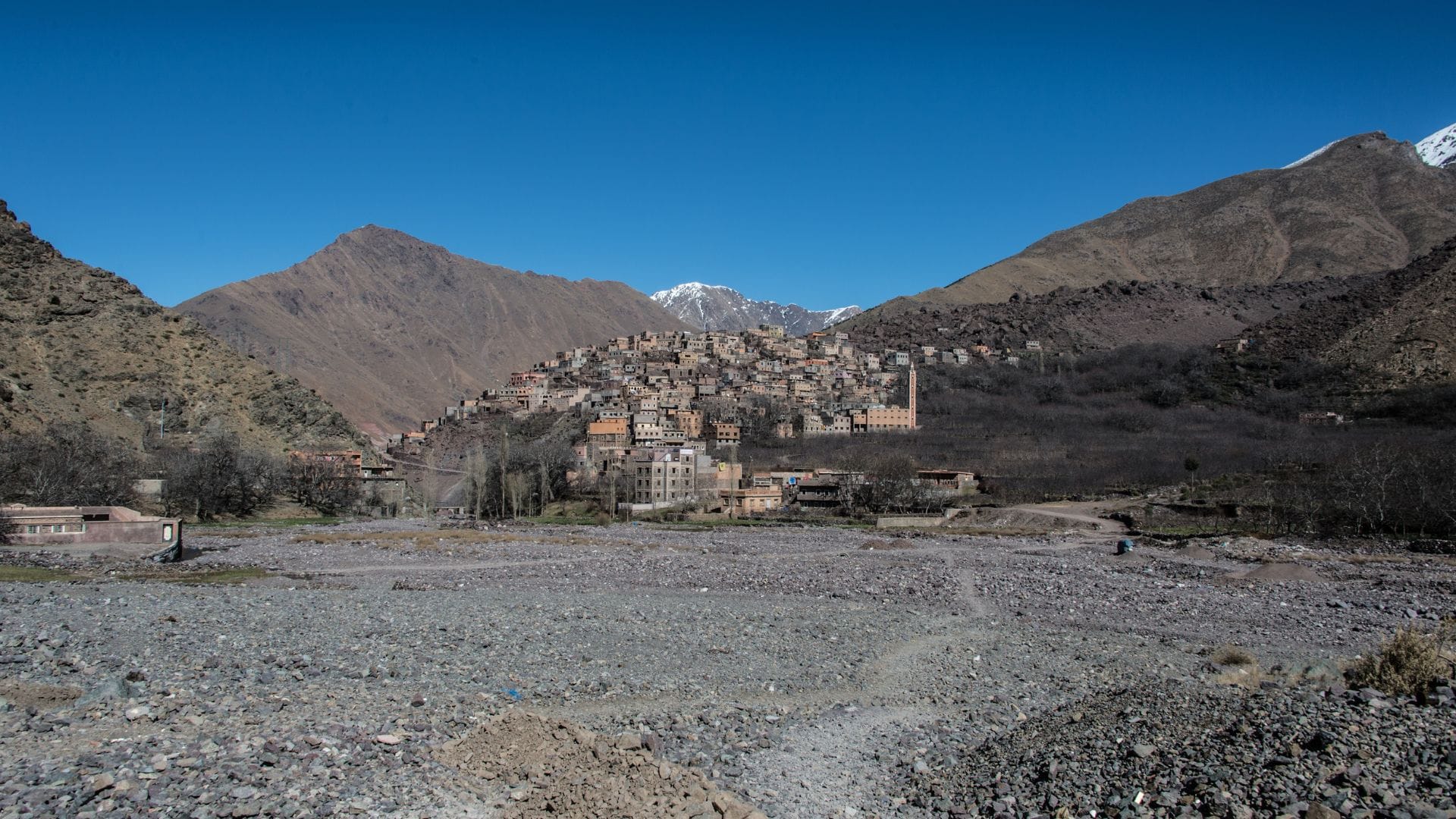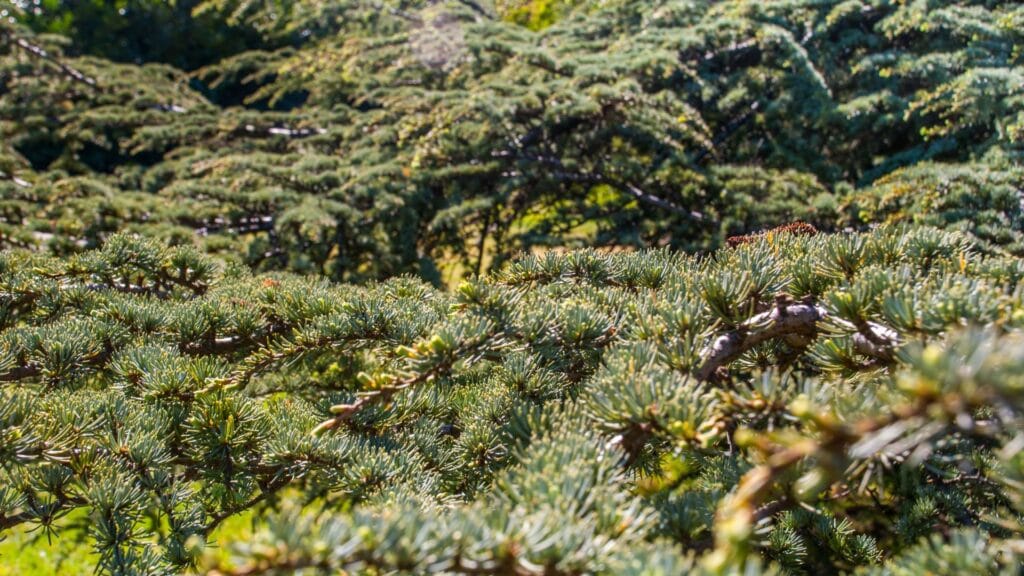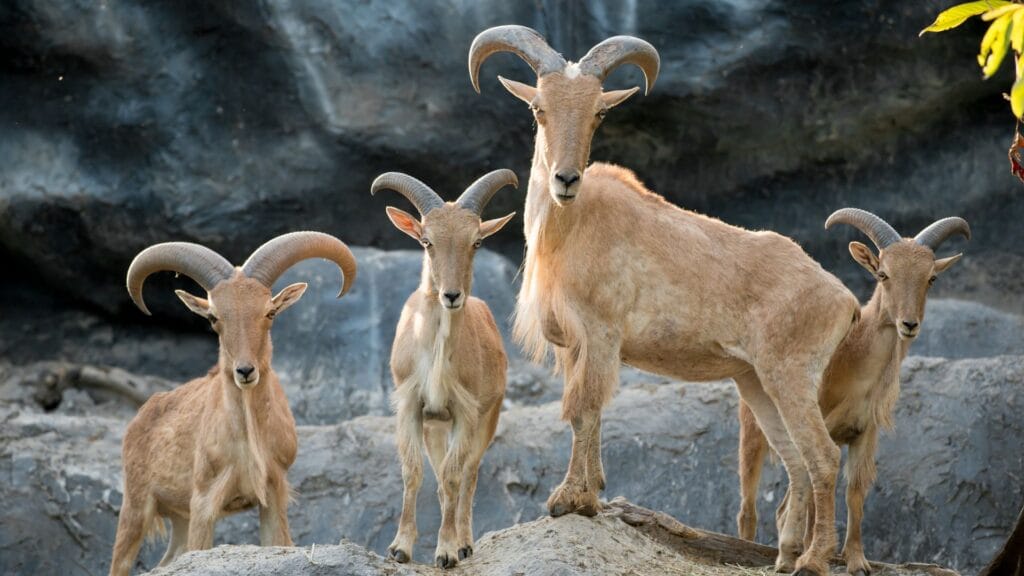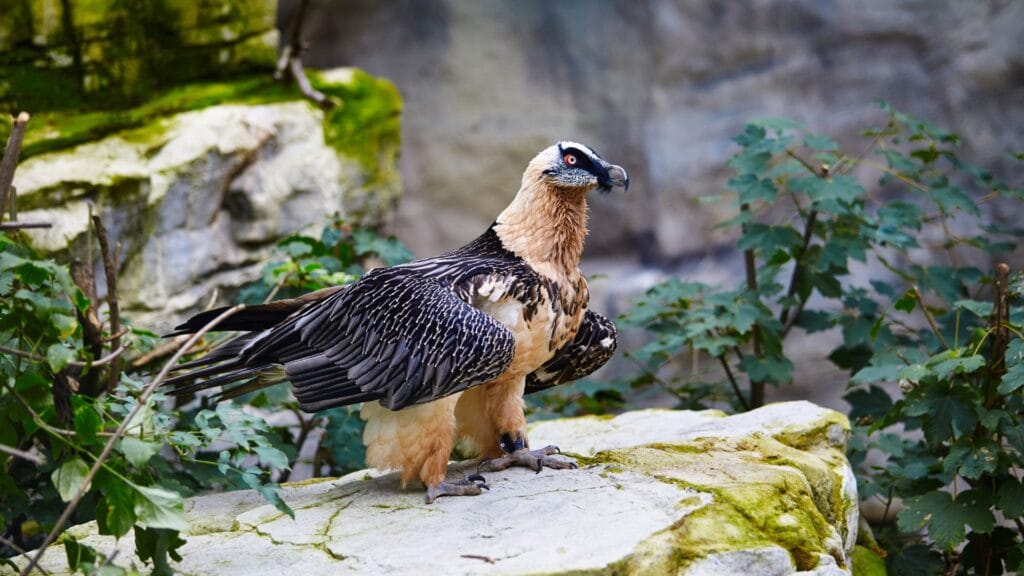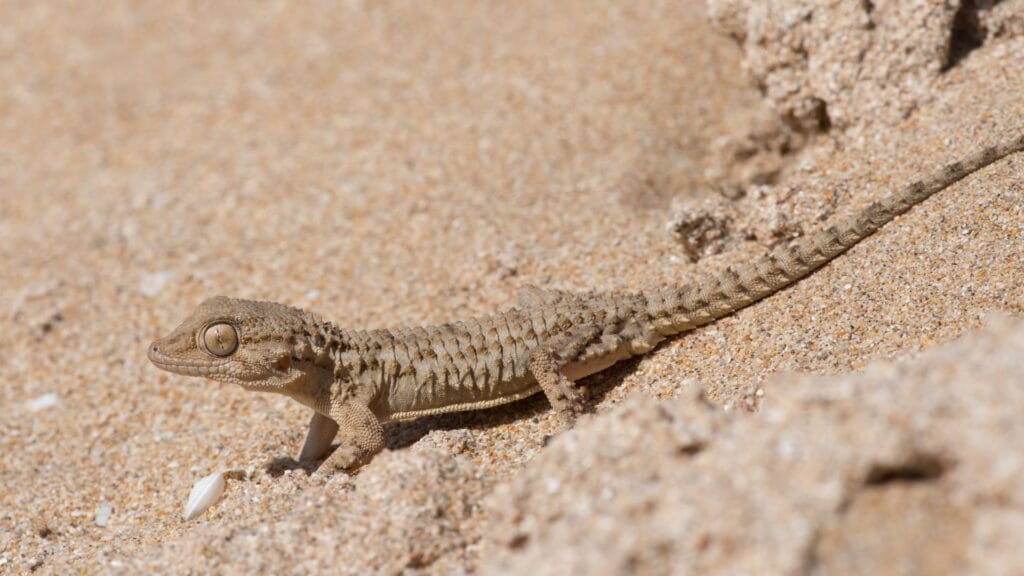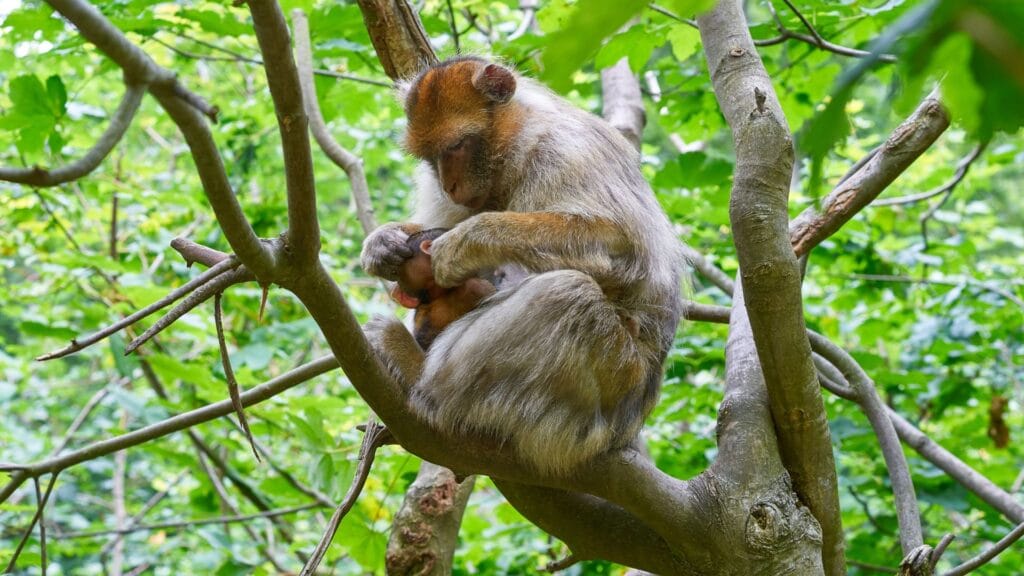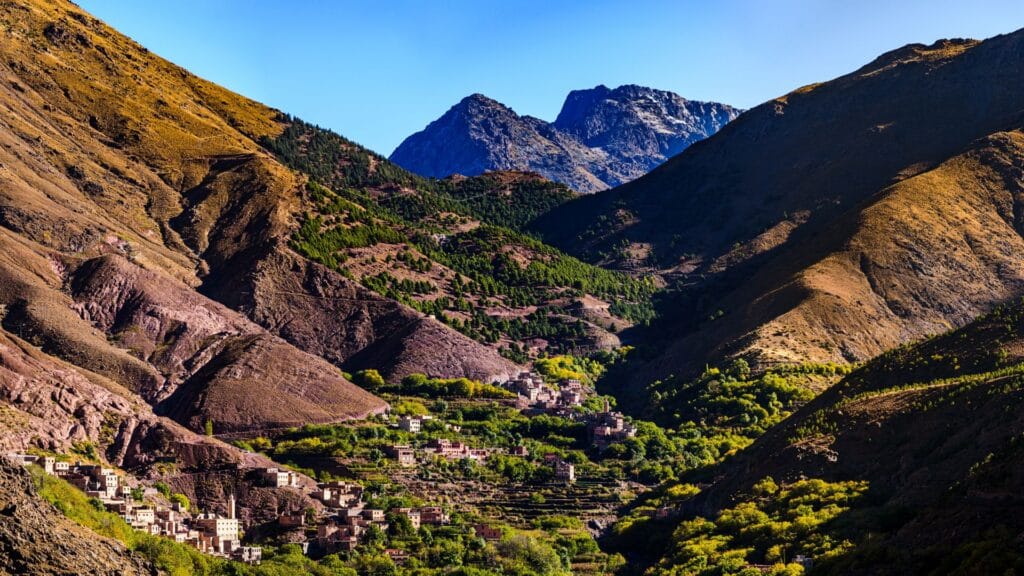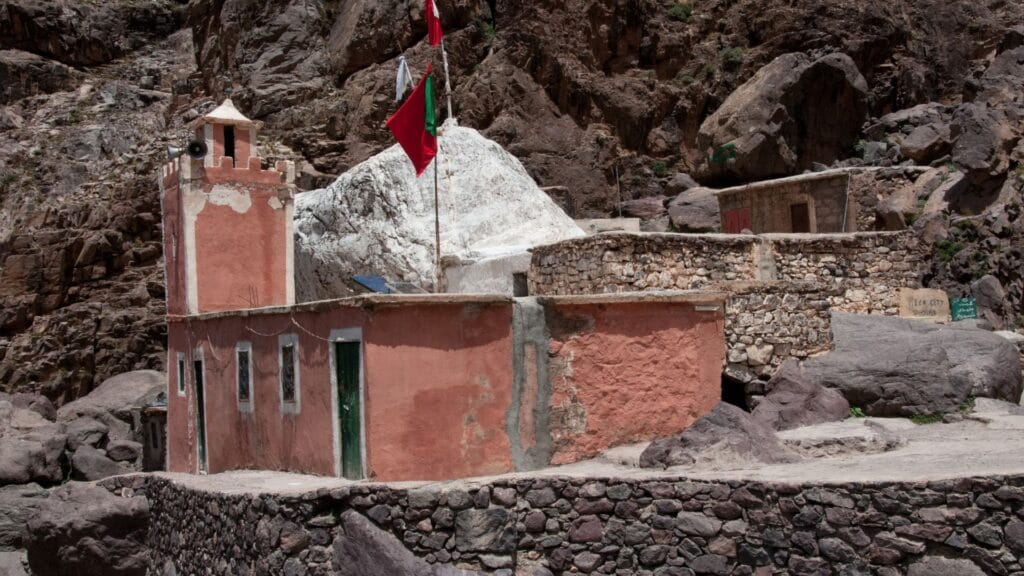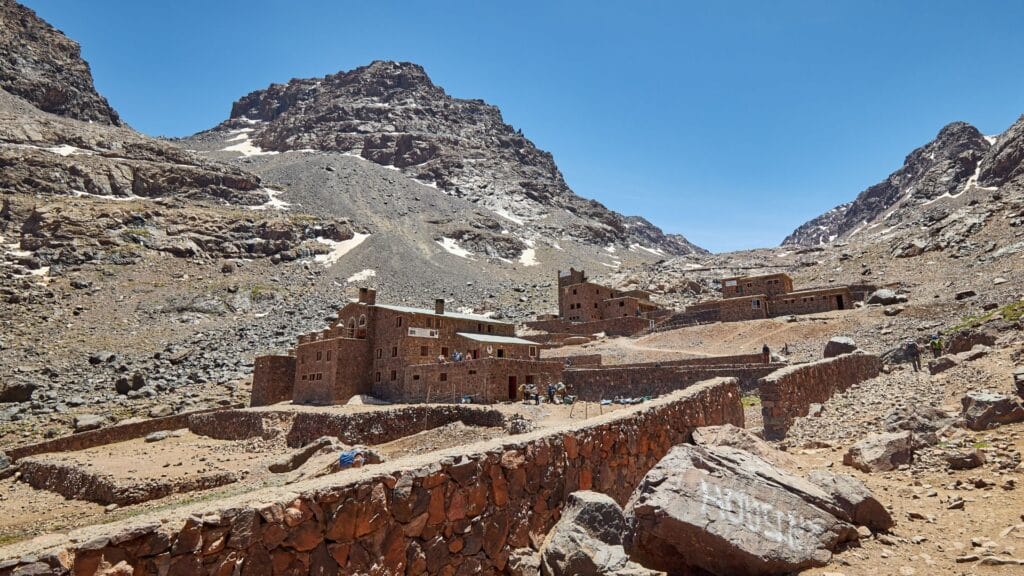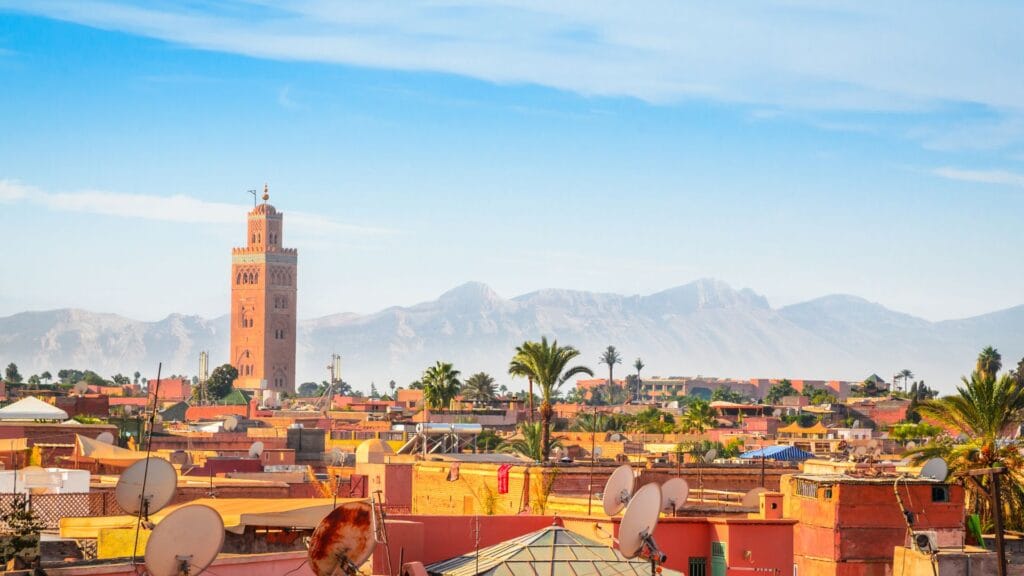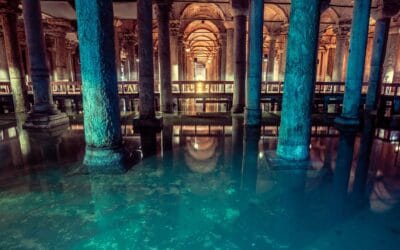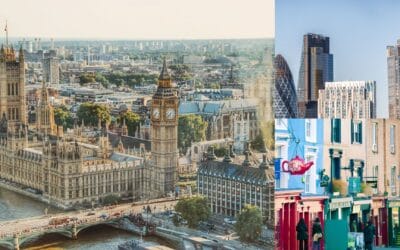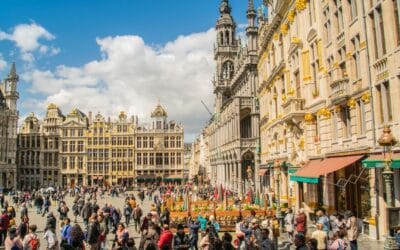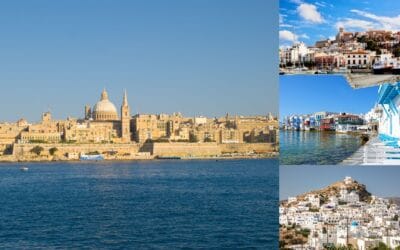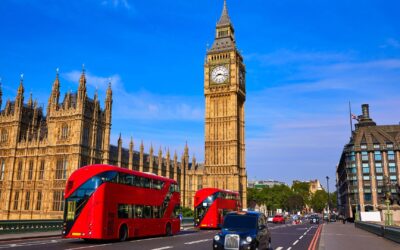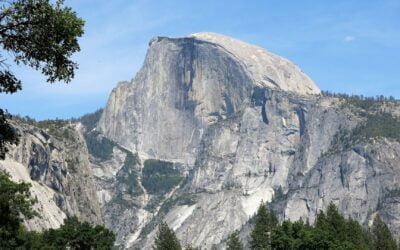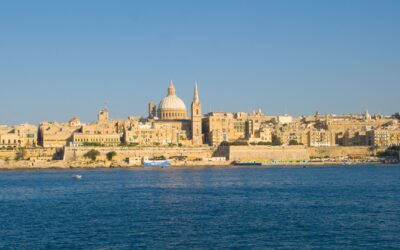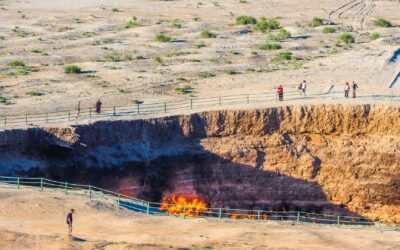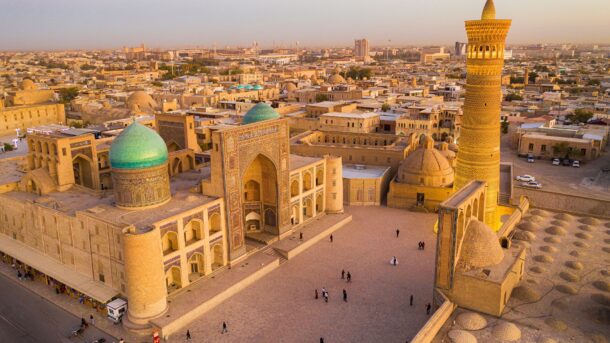Want to climb to the top of North Africa and enjoy views of the Atlas Range and, on clear days, of the Sara Desert? Then take a look at Mount Toubkal. While this peak is the highest point of the Atlas Mountain (4,167 m/13,671 ft), almost everyone can reach it, maybe even you. And to make things easier for you, I’ve prepared a Mount Toubkal trekking guide.
Mount Toubkal facts
OK, let’s get nerdy. Wondering why it is apparently known by two names? It’s because “jbel” means “mountain” in Arabic. So, in other words, it’s one name in two different languages. Now that we’ve clarified this, let’s pay attention to some other details.
One such detail is that Jbel Toubkal is nestled within the Toubkal National Park, about 60 km (37 mi) south of the famous Marrakesh. This means you can easily reach the area from a well-connected airport.
Perhaps you also want to know that the first recorded ascent of Jbel Toubkal occurred in 1923, by Marquis de Segonzac, Vincent Berger, and Hubert Dolbeau, although it is very likely that the indigenous Berbers reached the summit long before then.
Mount Toubkal flora & fauna
Lower altitudes, from 1,200 m (3,937 ft) up to 3,000 m (9,843 ft), are dominated by holm oak and Atlas cedar forests. These trees form dense canopies, providing shelter for an array of shrubs and other plant species.
Atlas cedar, what else?
As you climb higher, the vegetation transitions to groves of thuriferous juniper, a hardy species that thrives in the colder and drier high-altitude conditions. This tree species is particularly robust, able to withstand the harsh climatic extremes of hot summers and frigid winters above 1,800 m (5,905 ft). Alongside these trees, aromatic herbs such as wild thyme, rosemary, and lavender spread across the rocky slopes.
Above 3,000 m (9,843 ft), alpine vegetation takes over. Here, you’ll find Atlas daisies and other endemic flowering plants. In fact, Toubkal National Park is home to over 150 species of flowering plants, with 55 species being exclusive to this part of the Atlas.
As you make your way up the mountain, keep an eye out for some of Morocco’s most iconic species. One of the most notable ones is the Barbary sheep, known for its large, curved horns. These animals are endemic to North Africa, and Toubkal holds the largest population in the region. You might spot them grazing on the rocky slopes.
Four cute Barbary sheep
If birds are your thing, you should find Toubkal a nice place. For example, you might see the golden eagle, the bearded vulture, the alpine accentor, and the bullfinch.
A bearded vulture
Those of you venturing into the park’s forests may encounter the Barbary macaque, a primate that roams the lower regions of the park. Other animals include wild boar, small mammals like the Moorish gecko, and the elusive Atlas Mountain viper.
A Moorish gecko
Did you notice there are two Barbary macaques?
Mount Toubkal hiking routes
There are two primary routes that will take you to the peak: the South Cwm Route (also known as the Normal Route) and the North Cwm Route. Each route starts in Imnil, a picturesque village perched at approximately 1,800 m (5,900 ft). The village lies at the end of the tarmac road, making it the ideal spot for hiring guides and mules.
Surrounded by deep valleys and terraced fields, Imlil is a retreat from the heat of the lowlands, with summer temperatures ranging up to 45°C (113°F), while winter brings chilly conditions, often dipping below 0°C (32°F). Its landscapes offer diverse trekking routes, from short hikes to the Imlil Waterfall to multi-day adventures through valleys like Azzaden. The Lake Ifni, a unique high-altitude body of water created by glacial activity, lies nearby at an elevation of 2,295 m (7,530 ft).
Imlil
Each route has a somewhat different trekking experience, so here’s a detailed look at what you can expect along both paths.
South Cwm Route (Ikhibi Sud)
The South Cwm Route is said to be the easiest route to the summit. The trek begins in Imlil at 1,740 m (5,708 ft). The first stage takes you through lush valleys and terraced fields, and soon you’ll cross the river and reach Sidi Chamharouch, a pilgrimage site near a small waterfall. The route also offers a chance to explore the nearby Imouzzer, a 4,010 m (13,156 ft) peak that is part of the Toubkal Massif.
The Sidi Chamharouch shrine
For a large part, the normal route to Jbel Toubkal follows the well-known North Cwm Route, which also leads towards Imouzzer. The route branches off at Tikint ‘n Ouanas, a saddle between Imouzzer and Tibherine. The ascent to Imouzzer includes some scrambling over large blocks, graded T4, which adds to the adventure, doesn’t it? Many trekkers opt to climb both Imouzzer and Toubkal on the same trip.
Descending from Imouzzer involves following the North Cwm Route down to the Toubkal Refuges. You can choose to stay an additional night at the refuges or descend all the way back to Imlil, which involves a vertical drop of nearly 2,500 m (8,202 ft) in a single day.
The South Cwm Route then continues up towards the Toubkal Refuge at 3,207 m (10,521 ft), where most trekkers spend the night before the final push to the summit. At dawn, you’ll start the ascent to the Tizi n’Toubkal saddle at around 3,940 m (12,926 ft). Here you might get a glimpse of the Sahara Desert, stretching to the south.
The interesting-looking Toubkal Refuge
The final climb to the summit is steep but manageable. As you reach the top, the views are quite spectacular. On clear days, you can see the High Atlas Mountains, Marrakesh in the distance, and the Sahara.
North Cwm Route (Ikhibi Nord)
The North Cwm Route is a steeper and more technical ascent, recommended for more ambitious hikers. This route is significantly less crowded, which some may prefer. Starting from the same point in Imlil, this path veers off after the Toubkal Refuges and leads to a steeper, more challenging ascent.
On this route, you will see wreckage from a plane crash. In November 1969, a Lockheed L-749 Constellation aircraft, carrying ammunition, crashed near the summit of Tibherine East due to engine problems while flying over Morocco. Parts of the aircraft were scattered down Toubkal’s northwest couloir, with one of the engines embedded in the summit.
The North Cwm route involves descending the valley trail for about 5 minutes before crossing the river to the right and following a path along the bank. Ahead lies the opening to the North Cwm, defended by a large moraine. You will have to traverse above isolated blocks near the stream and find a small track that slants up the loose moraine to reach its crest. The path then follows the crest to a large bouldery crescent above the right side of the valley bed. From there, you will enter the valley bed where the slope eases, before ascending to steeper terrain cut by several rock bands, which can be climbed easily or bypassed to the left through scree.
The route continues up to an obvious col in the main ridge, with a track that keeps slightly to the left along the rocky northeast ridge of the mountain, rising for about 150 m (492 ft) to reach the summit plateau. The ascent typically takes around 4 hours and 30 minutes, while the descent takes around 2 hours and 30 minutes.
For variety, you might want to ascend via the South Cwm and descend through the North Cwm.
How long does it take to trek Mount Toubkal?
A typical trek up Mount Toubkal is completed in two days, with one night spent at a mountain refuge. This duration is ideal for most trekkers, but depending on your pace, fitness, and acclimatization needs, you can extend it by an extra day or two.
Spending time in Imlil or even an additional night at the refuge will help your body adjust to the altitude and prevent altitude sickness.
The best time of the year to summit Mount Toubkal
For most situations, the best times to climb Toubkal are spring (April-May) and autumn (September-October). These months offer moderate temperatures and clearer skies, making the ascent both comfortable and scenic. In spring, the trails come alive with blooming wildflowers, while autumn presents crisp air and fewer crowds.
During the summer months (June-August), the lower sections of the trail can become quite hot, with temperatures in Marrakech reaching up to 40°C (104°F), though the mountain itself remains cooler at higher altitudes.
Winter (November-March) brings a different challenge, as Toubkal becomes a snow-covered landscape requiring specialized equipment like crampons and ice axes.
Mount Toubkal camping
While many trekkers opt to stay at one of the two main refuges—Refuge du Toubkal or Les Mouflons. Camping near the refuges or in designated areas can be a fun alternative. At 3,207 m (10,521 ft), the camping sites are usually located near the refuges, allowing you access to basic amenities like water and toilets for a small fee. These refuges also provide meals, which can be helpful if you don’t want to carry food supplies. If you prefer more isolation, you can pitch your tent in quieter spots, but remember that you’ll need to bring your own gear, including a high-quality sleeping bag (rated for -5°C / 23°F or lower, especially in winter).
Winter camping on Toubkal adds a layer of challenge, with snow covering most of the mountain. However, the experience of sleeping under the stars in a snow-blanketed landscape may well be worth the effort, if it’s any effort at all.
How much does it cost to trek Jbel Toubkal?
Here’s a breakdown of what you can expect to spend:
1. Trekking packages
The cost of guided treks varies based on the duration and services included:
- 2-day trek: Prices typically range from 1,474 to 2,162 MAD ($150-$220 / €140-205) per person, covering guide services, meals, one night at the refuge, and sometimes transport from Marrakesh.
- Longer treks (e.g., 3-6 days, covering additional summits or Berber villages): These can cost around 2,162 to 4,127 MAD ($220-$420 / €205-390), depending on the duration and complexity of the trip.
2. Accommodation
If you’re staying in Imlil before or after your trek, expect to pay about 197 to 493 MAD ($20-$50 / €19-46) per night for a basic guesthouse or gîte. Mountain refuges cost around 140-280 MAD ($14-$28 / €13-26) per night. Les Mouflons is slightly more expensive but has better amenities, including optional hot showers.
3. Guide and mule hire
You cannot climb the mountain without a guide. You will have to be escorted by a local guide from Imlil to the refuge and then the summit. There are checkpoints on the route where passports and Guide identification are checked. Expect to pay around 491 MAD (€50 / $51) per day for a guide, and about 147-196 MAD (€15-20 / $15-20) per day for a mule to carry your gear.
4. Equipment rental
If you’re trekking in winter, you’ll need crampons and ice axes, which can be rented in Imlil for around 49 MAD (€5 / $5) per item per day. Basic trekking gear such as sleeping bags and hiking poles are also available for rent.
6. Other costs
- Transport from Marrakesh to Imlil: Private taxis cost around 295 MAD ($30 / €28), while shared taxis are around 49 MAD ($5 / €4.50) per person.
- Tipping: It’s customary to tip guides and porters.
In total, a 2-day Toubkal trek can cost $300-$500 (€276-461), depending on the season, length of the trek, and level of comfort you prefer.
How to get to Mount Toubkal
The most common way to reach Mount Toubkal is by flying into Marrakesh Menara International Airport. Marrakesh is well-connected with direct flights from major European cities like London, Paris, and Madrid, and also from the U.S. or Canada via European hubs. Once in Marrakesh, you can take a taxi or bus to the village of Imlil, the starting point for most Toubkal treks.
View of the Atlas Mountains from the cool city of Marrakesh
If you prefer to drive, renting a car is another option, but during winter months, road conditions can be tricky due to snow and falling rocks.
If you are located in Southern Spain, you can reach Morocco on a ferry. For example, the Tarifa to Tangier Ville ferry takes just under 1 hour and brings you directly into the city of Tangier. Feel free to check out ferry schedules from Tarifa and nearby locations.
For those arriving in Tangier by ferry, the Al Boraq high-speed train offers a quick o Casablanca, taking just 2 hours. From Casablanca, you can transfer to a regular train to reach Marrakesh in about 3 hours.
Mount Toubkal guided tours
Toubkal National Park is one of the most explored places in Morocco and there are several guided tours to the peak you can book before you arrive. For example, you have the 2-Day Mt. Toubkal Trek with 1-Night Stay & Meals, which will pick you up from Marrakech. If two days are not enough for you, consider taking a look at 3-Day Mount Toubkal Climbing Trek, which also starts from Marrakech. While these are two of the most popular guided tours available online, it’s best practice to take a good look at many options before deciding who will play an important role in your life for two or three days.
A few things you might want to know before arriving in Morocco
Morocco is one of the most visited countries in Africa but how much do you know about it? Here are some details that might come in handy.
1. Culture
Morocco has been largely influenced by Berber, Arab, and French cultures, which is evident in its language, cuisine, and architecture. The country’s past includes the rise of Berber dynasties, Islamic conquests, and European colonization, each leaving a mark on Morocco’s cultural ecosystem.
2. Currency
Morocco uses the Moroccan Dirham (MAD) as its official currency, which is divided into 100 santimat. You cannot purchase or exchange Dirhams outside Morocco, so it’s best to exchange them once you arrive. The current exchange rate is approximately 1 USD = 10.30 MAD and 1 EUR = 11.05 MAD. You can exchange money at banks, official exchange bureaus, or use ATMs in major cities and tourist areas.
3. Bartering
Like Middle Eastern and North African societies in general, Morocco loves bartering. Bargaining is an essential part of shopping in Moroccan markets and often extends beyond souvenirs to things such as taxis.
It’s expected that the initial price offered by a vendor will be much higher than the item’s actual value, especially for you, the tourist. Vendors often anticipate negotiating down to a fairer price, which typically ranges between 30-50% less than the starting price. If you cannot agree on a price, walking away can be a powerful tool, as vendors might lower their offer to keep your business. If possible, take a local you know with you and let them negotiate for you.
Bottom line: You can conquer Mount Toubkal in just two days
Climbing Jbel Toubkal means climbing the highest peak in North Africa and to some, it may feel easier than bargaining for a reasonable price in a Moroccan souk. Sure, you’ll feel the altitude a bit, but it’s not Kilimanjaro. In fact, Toubkal is in the top easy mountains to climb in Africa. You can practically reach the top with a decent pair of sneakers, some water, and a bit of enthusiasm. And when you stand at the summit, basking in the sweeping views of the Atlas Mountains, maybe you’ll wonder why more people don’t do this.

